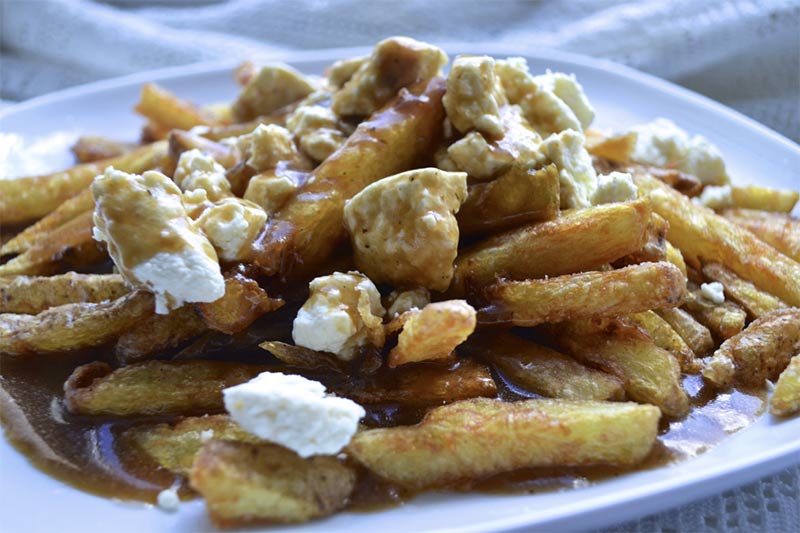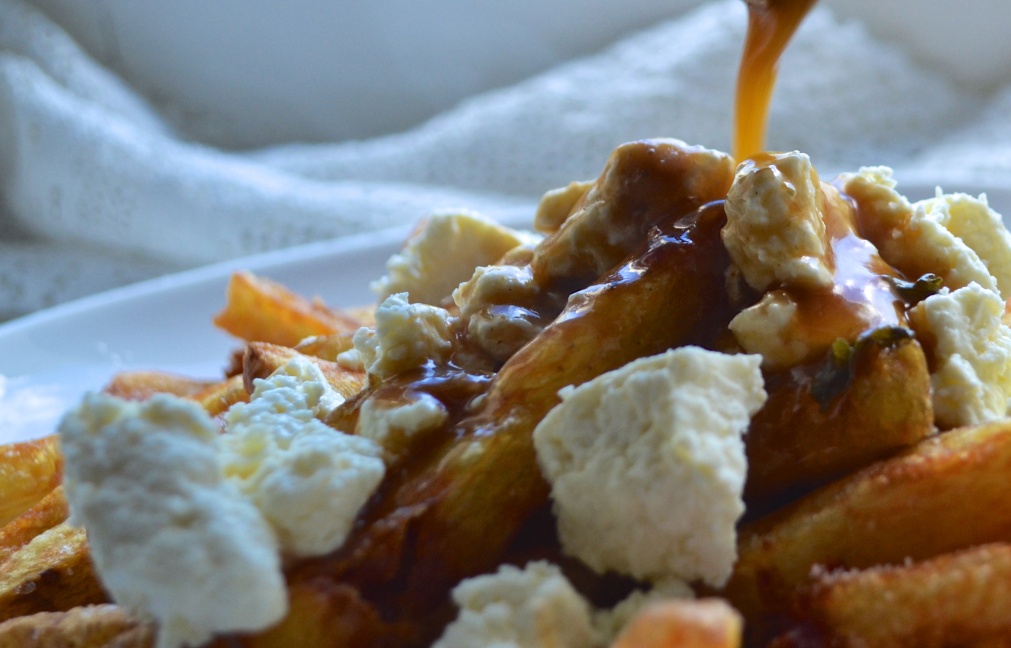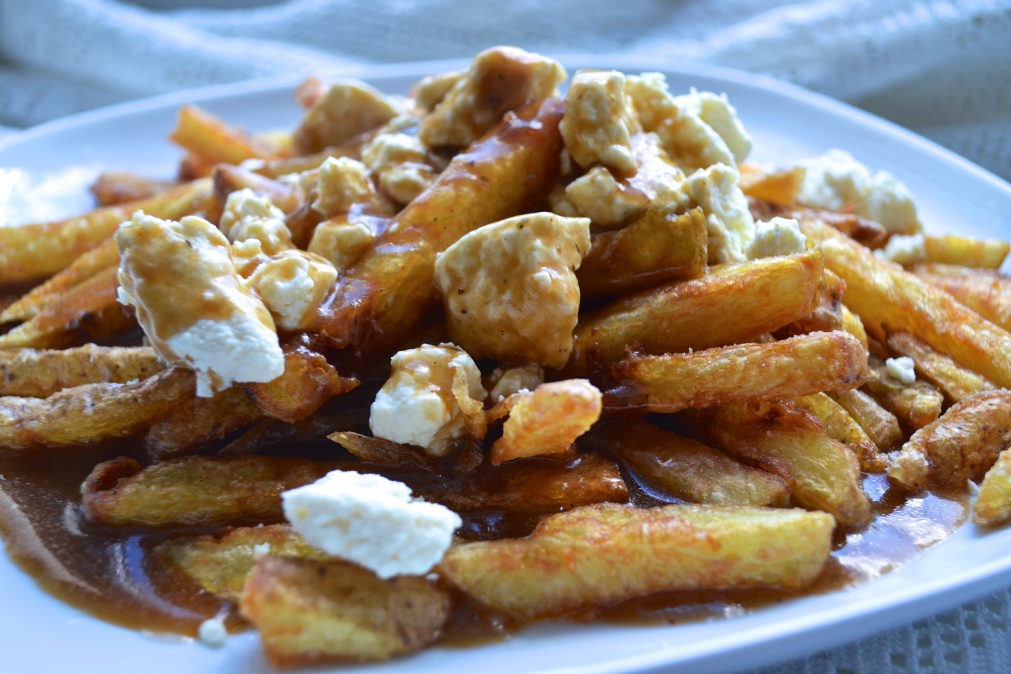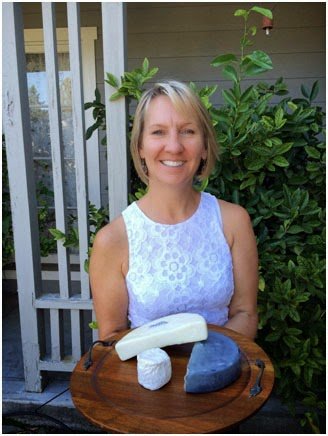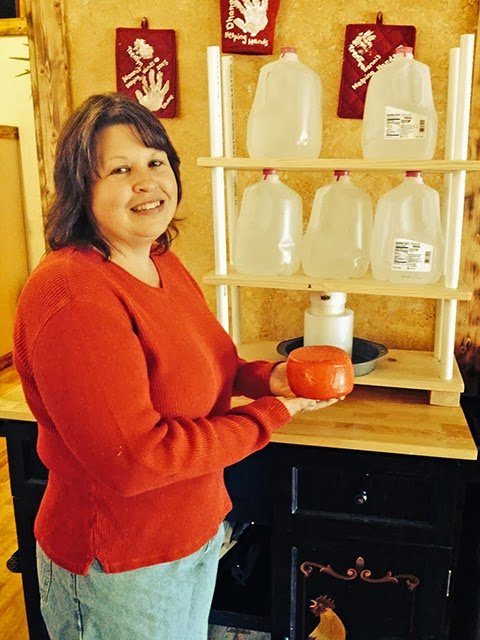There is absolutely nothing like a good food blog – the pictures are amazing, the directions are tried and tested (and usually fairly simple), and there are actual comments from the writer about the food. What more could you possibly want for your recipes?
Andrew Chisholm does a great food blog- The Migrant Chef, specializing in comfort foods. He just started it a few months ago, but there appears to be no learning curve involved – all his recipes are wonderful.
He lives in Oslo, Norway now, but he was born and raised in Eastern Canada. So he knows his way around a bowl of poutine. And, if that isn’t “comfort food” we don’t know what is!
In the recipe below, he used our own recipe for cheese curds. We think it’s fabulous.
I’m Talking Aboot Poutine, Eh?
By Andrew B. Chisholm at The Migrant Chef
Ask any Canadian about poutine and they’ll know exactly what you’re
talking about. Ask any Canadian about Vladimir Putin and they’ll start
drooling because all they heard was poutine.
This quintessential Canadian dish couldn’t be anymore
straightforward. French fries, cheese curd, and gravy — that’s it. But
is it really that simple? Any buzzed up party-goer stumbling out of a
bar at 2am on a Saturday night, from Halifax to Victoria, may certainly
say it is that simple. However, ask a sober foodie in the light of day,
or even better, go straight to the source in Quebec to discover what
makes this dish far more complex than meets the eye.
I’ve had my fair share of poutine. Some utterly delicious, while
others were a soft soggy, greasy mess. As easy as it is to make, it’s
equally easy to mess up. For the more adventurous poutine seekers,
variations of bacon cheeseburger, seafood, and pulled pork can be found
in a Canadian poutinary. My personal favorite growing up was poutine
topped with donair meat. If you’ve never heard of donair, don’t fret,
I’ll tackle that Greek-Canadian treasure at a later date.
The Elements
To make just three basic elements work in unison, they must all be
individually perfect. That means an extra crispy french fry that
contrasts against a soft squeaky cheese curd and melded together with
steaming hot gravy. Timing is crucial, but nowhere near as important as
quality.
French Fries:
The fries used in this poutine are the same as the ones mentioned in a previous post: Not Just Any Burger and Fries.
Feel free to read through the original post if you haven’t already, but here is a copy of the french fry recipe.
- 6 to 8 large potatoes
- 1 L Sunflower Oil, for frying
- 4 L water, for boiling
- 2 tbsp potato starch
- 2 tbsp oil
- Kosher or Sea salt to season
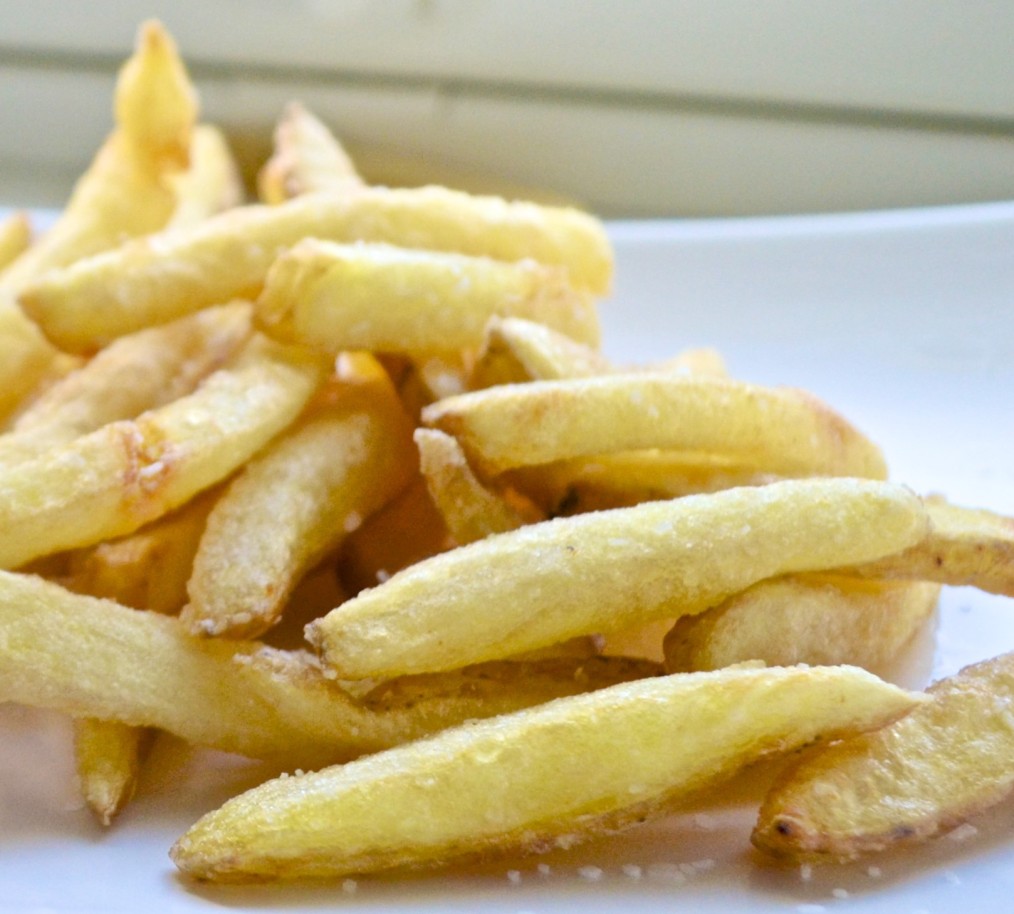
Cut the potatoes into fries thick or thin, your choice. Soak them in ice cold water for at least 30 minutes.
The next step is to boil them. Boiling the fries will cause tiny
ridges along the edges that will absorb the oil, creating a crispness.
It’s best to put the fries in boiling water to shock them, rather than
have them come up to a boil gradually.
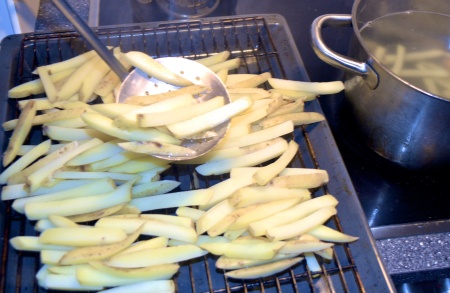
Boil the fries until they’re just ready to start falling apart. Lift
them out of the water, onto a cooling rack. Be careful. Let them sit in a
cool dry atmosphere. The fridge is a perfect place. This will help draw
a lot of excess moisture out. Let them dry for a minimum of four hours.
Before we fry them, place all the fries on a baking tray and sprinkle
with potato starch, then drizzle 2 tbsp oil. Gently massage the starch
and oil all over the fries, covering the entire fry.
Now it’s time for the first frying. This is called the blanching
stage. Heat oil to 120C (248F), no hotter. Cook in small
batches, but as you do, agitate them, either by constantly moving the
basket (if using a deep fryer) or by carefully moving the pot on the
stove.
Just as the fries turn ever so golden, take them out and place them
on the cooling rack again. But don’t let the oil go above 120C (248F).
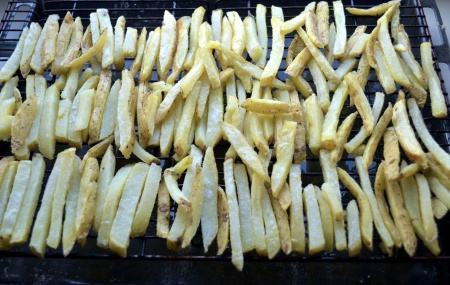
Allow to cool completely.
The third and final frying will be fast and hot. Crank the heat up to
180C (356F). Toss the fries in and continually agitate them by lifting
them in and out of the hot oil. Should only takes 3-5 minutes to achieve
that super crispy exterior. Remember to work with them in small
batches.
Take the fries out of the oil and into a bowl. Sprinkle with salt.
The Cheese Curds:
I must credit The Cheese Queen, Ricki Carroll, of New England Cheesemaking Suppy Company for her informative website and excellent
recipe for cheese curds: https://cheesemaking.com/Recipe_CheeseCurds.html
Check out her website for great cheese recipes and affordable supplies that are shipped all over the world.
Below are photos of my adventure in making cheese curds. If
interested in making your own curds, be sure to read Ricki Carroll’s
recipe carefully since it’s much more detailed than my description that
follows.
Ingredients:
- 7.5 liters of whole milk (2 gallons)
- 1/2 tsp calcium chloride
- 1 packet of thermophilic culture
- 1/2 tsp animal rennet
- 1/4 water
- 2 tsp salt
First I warmed the milk to 35.6C (96F), then added calcium chloride and thermophilic culture.
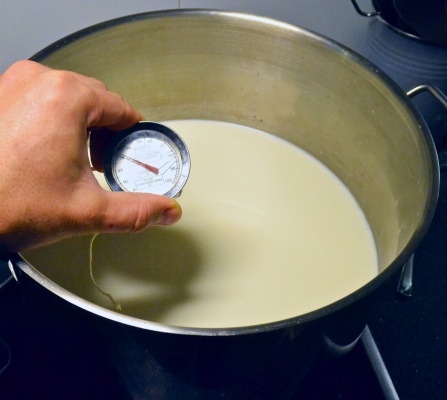
After 30 minutes I added the rennet and waited 25 minutes for the whey to clear. Then I cut the curd into 2cm (3/4″) cubes.
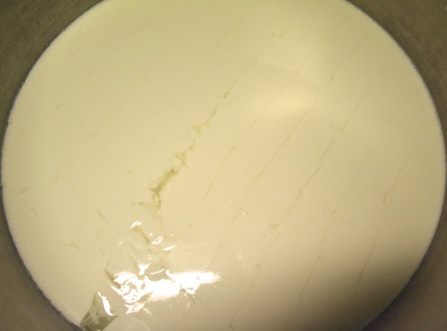
Next, I stirred the curd and slowly heated them up to 46.7C (116F) and
cooked it for 45 minutes. And lastly, I drained the curd into a
cheesecloth and pressed it with 4kg (8.8 lb) of weight for 3 hrs.
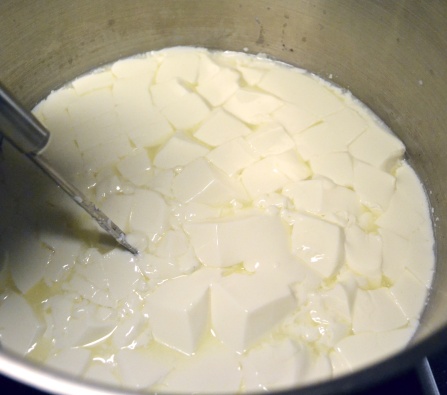
And my final product — perfectly squeaky cheese curds I sprinkled with salt.
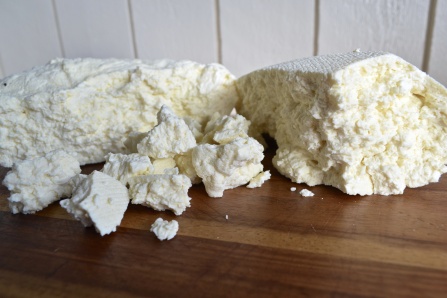
Now I have 1kg (2.2 lb) of cheese curd ready for poutine. Thanks Ricki!
The Gravy:
To start the gravy, we first need a stock.
For the stock:
- 2 chicken carcasses
- 2 carrots
- 2 stalks of celery
- 1 large onion
- 1 tbsp salt
- 1 tbsp oil
- 1.5 liter hot water (1/2 gallon)
- 2 bay leaves
- 10 peppercorns
- 1/2 cup lemon juice or white wine to deglaze
For the Gravy:
- 1.5 Liters (1/2 gallon) chicken stock
- 2 tbsp flour
- 2 tbsp butter
- 1 tsp yeast extract (Vegemite or Marmite)
- 1 tsp dried thyme
- 1 tsp marjoram
- 1 tsp ground sage
- 1 tsp black pepper
- 1/2 tsp tarragon
- 1/2 tsp garlic powder
- 1/2 tsp onion power
- 1/4 ground rosemary
- 1/4 tsp cloves
- 1/4 tsp nutmeg
- more salt (optional)
First chop the chicken carcasses into big, but manageable pieces. Also chop the carrot, celery, and onion into big pieces.
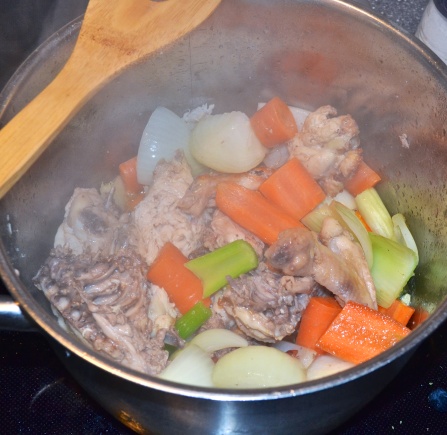
In a large stock pot over medium-high heat, add oil. Then put the
chicken pieces in. Let them sizzle and stick to the bottom of the pot.
Cook for 5-10 minutes until the pieces are a rich golden color and have
really stuck to the bottom of the pot.
Now add the veggies and continue cooking for 10-15 minutes. If the
brown bits stuck to the bottom start to turn black, then add the lemon
juice or wine now. Ideally, you want those bits dark brown, but not
black.
After you’ve deglazed the bottom of the pot, you can add all the
water, 1 tbsp salt, peppercorns, and bay leaves. Bring to a boil, then
turn down to low and let simmer covered for 1 hour.
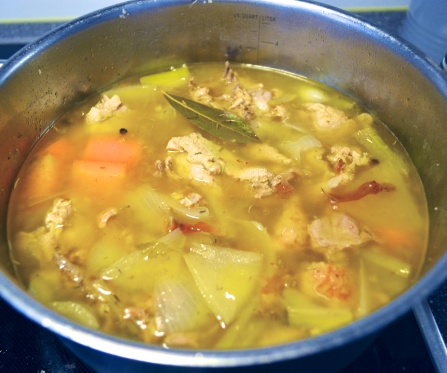
After an hour, drain the stock through a fine-mesh sieve. Return stock to stove and continue to simmer.
Meanwhile, in a pestle and mortar or blender, combine thyme,
marjoram, sage, pepper, tarragon, garlic powder, onion powder, rosemary,
cloves, and nutmeg. Crush into a fine powder.
Bring stock back up to a boil and add spice mixture and yeast
extract. Boil for 3 minutes, then return to a simmer. Taste to season.
Maybe more salt depending on your preference.
To make the gravy, in another large pot combine equal amounts of
butter and flour. Start with 2 tbsp each. Stir on medium heat until the
roux turns brown and has a nutty scent. About 5-7 minutes.
Whisk stock into roux, starting with one cup at a time. As it
thickens, continue adding more stock to desired thickness. If the gravy
becomes to thin simply mix 1 tbsp of cornstarch and 1/4 cup of cold
water into a cup, stir well then add to gravy a little at a time until
it thickens.
Simmer gravy for at least 30 minutes before using. If using the next
day, allow gravy to cool, then store in a container in the fridge.
As shown in the photo below, to assemble, simply pile fries onto a
plate or in a bowl, pack a handful of cheese curd on top, and ladle very
hot gravy over top.
As a final note, I discourage use of a less than
premium quality stock or gravy, but there are good ones out there if you
don’t want to make it. Also, cheese curd isn’t always readily available
in all supermarkets, and though nothing can truly substitute a squeaky
cheese curd, when you’re in a jam a mild cheddar, gouda, or Swiss style
cheeses, broken off into chunks can replace the curd and still be
satisfying.
Enjoy this purely Canadian guilt-ridden fest!!!






























